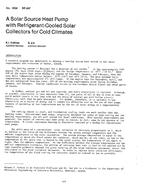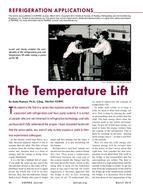This paper develops a simplified analytical method for determining the theoretical ideal performance of the Edwards cycle employing only tabulated boundary-state thermodynamic property data. The ideal Edwards cycle employs a multi-component/mixed-phase refrigerant which undergoes two heat transfer processes and isentropic compression and expansion processes. This cycle has been previously analyzed through the application of a polytropic model for the compression and expansion process [1]. While this previous analytical approach provides insight to the details of the Edwards cycle, it is subject to slight errors resulting from small deviations from true ideal process path models. Conversely, the analytical methods presented here are fully independent of any hypothecation of the details of the compression and expansion process paths; one depends only upon well-known tabulated thermodynamic property data over isentropic processes to calculate the theoretical ideal performance of this cycle. Thus, this analysis is a direct analog of the method now used to compute the ideal performance of fluorocarbon vapor-compression systems.
In an air-conditioning system with a maximum condensing temperature of 150°F (65.6°C) and a minimum evaporation temperature of 40°F (4.4°C) the polytropic analysis of the Edwards cycle predicts a cooling COP of 8.19. The isentropic boundary-state analysis, on the other hand, results in an ideal cooling COP prediction 8.22 including ideal secondary fluid injection work. A fluorocarbon vapor compression system using R-12 as the refrigerant shows an ideal isentropic COP of 4.26 across the same condensing and evaporation temperatures employing condenser. subcooling and evaporator superheating.
Citation: ASHRAE Transactions, Volume 84, Part 2, Albuquerque, NM
Product Details
- Published:
- 1978
- Number of Pages:
- 12
- File Size:
- 1 file , 640 KB
- Product Code(s):
- D-AL-2501


